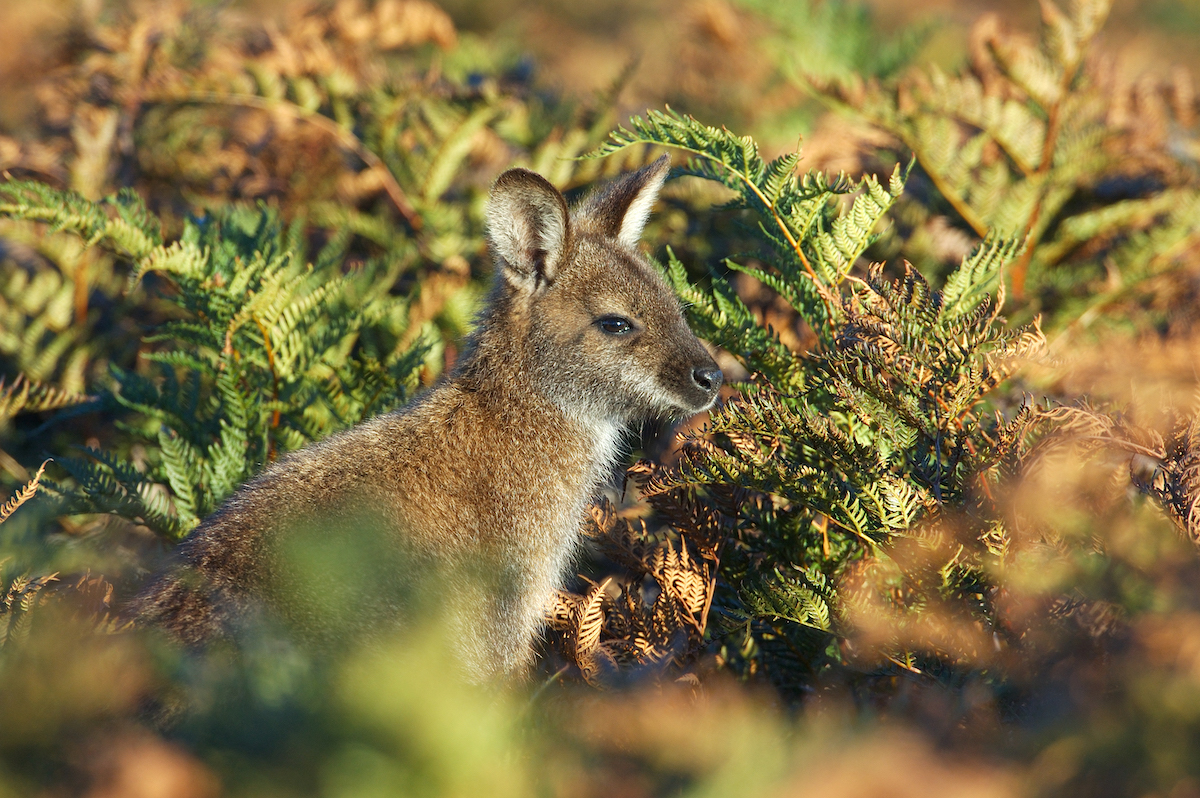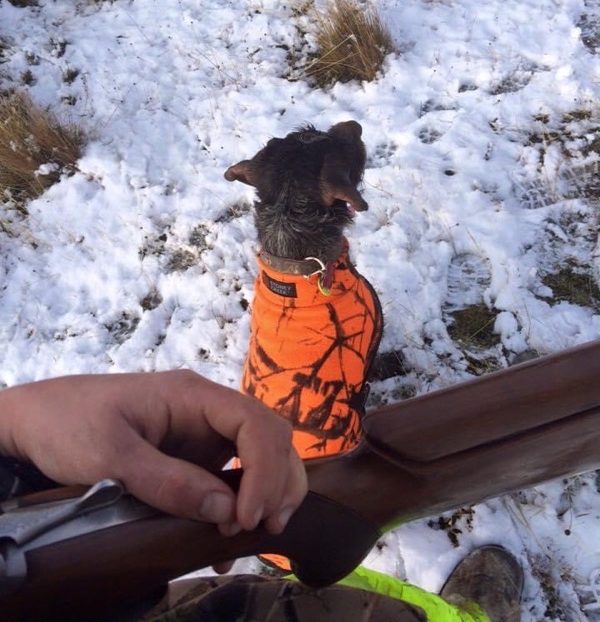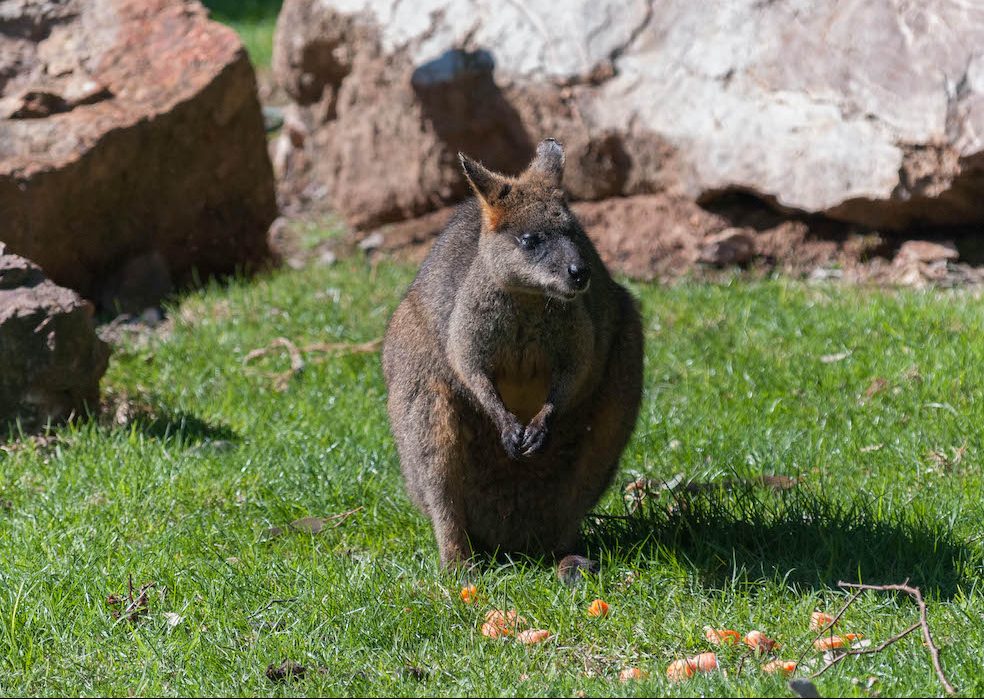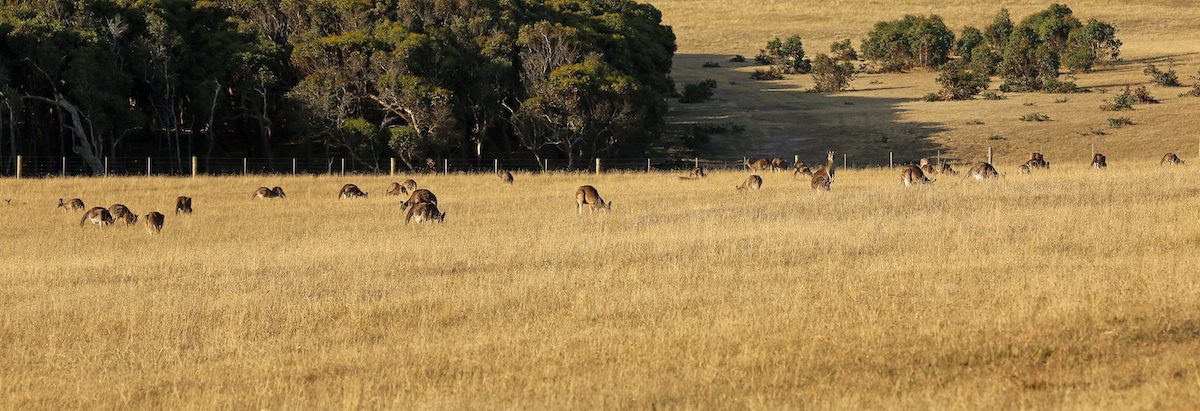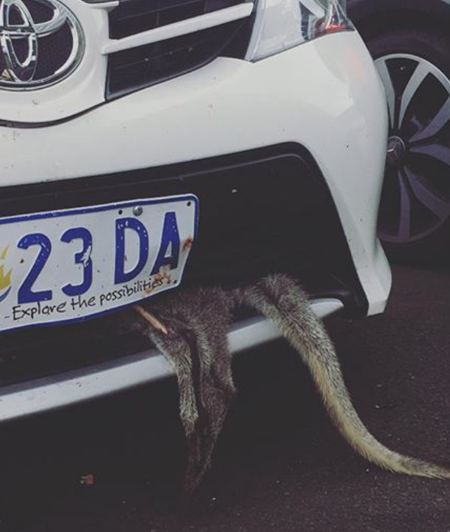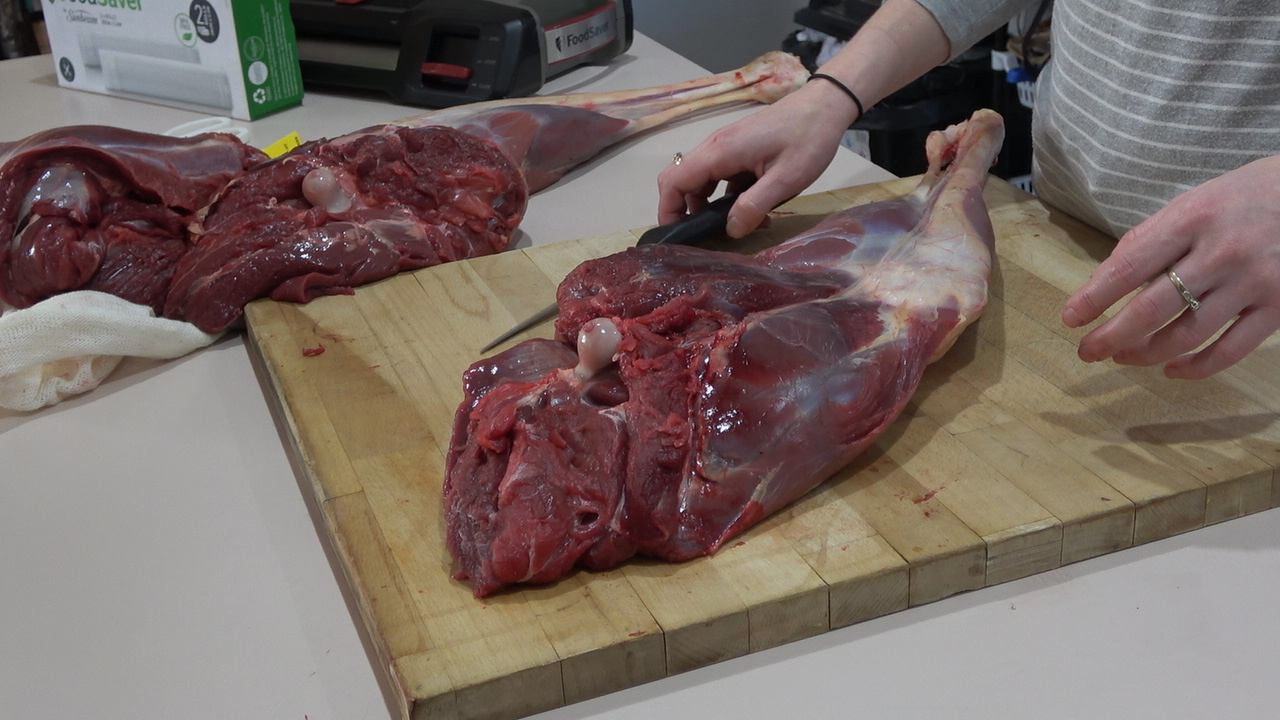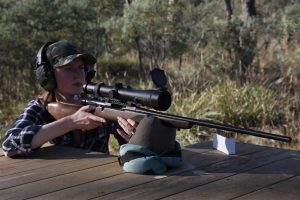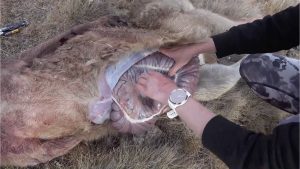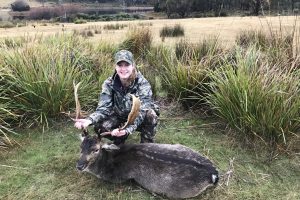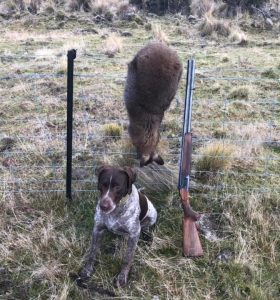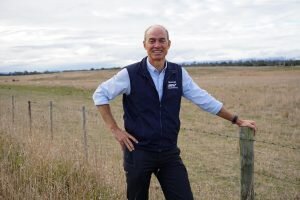Wallaby hunting has again come under fire in Tasmania with a vocal minority of activists using graphic images and emotional language to paint hunters as blood thirsty killers and force the government to ban wallaby hunting. But as usual, the city-based activists show how little they understand the situation.
A small handful of wallabies visiting a suburban garden is a natural wonder but a mob of wallabies and kangaroos destroying crops and pastureland is an economic disaster. Without truly understanding the extent of the problem, it is impossible to make judgements on the necessity for hunting. In this article, we examine why a ban on hunting wallabies is the wrong approach.
History of hunting wallabies and kangaroos
Hunting for wallaby and kangaroo is hardly a new thing. Australians have hunted the macropod species for thousands of years – for food, fur and even that other dreaded F-word, fun!
Indigenous Australians used fire to flush the animals from dense bushland, catching them in large nets before finishing them off with spears and knives.
Early settlers learned the same hunting methods from the locals before adapting the technique to tools they were more familiar with: guns and hounds.
Instead of fire, which can be unpredictable and difficult to control, the settlers preferred using dogs to flush the animals out of thick bushland into the open where the hunting party would be waiting with shotguns and rifles.

In 1770, John Gore, an officer under Captain Cook, became the first settler to shoot a kangaroo but he definitely would not be the last.
Kangaroo and wallaby hunting quickly became a popular pastime, with hunting clubs popping up all over the colony. The sport even attracted international visitors, with Charles Darwin, Anthony Trollope, Thomas Balcombe, and Edward Roper among the well-known people who travelled from overseas to hunt these strange creatures.
In 1848, Scottish explorer Thomas Mitchell wrote that “fire, grass, kangaroos and human inhabitants seem all dependent on each other for existence in Australia. For any one of these being wanting, the others could no longer continue.”
Mitchell was light years ahead in his observation, as modern ecologists are only just now beginning to understand the symbiotic partnership that exists between macropods, humans and the environment.
Traditional ways still prove the most effective
Technology might have improved since Colonial times but traditional methods are still largely used to flush and hunt wallabies – and for good reason. They are effective.
Tasmanian hunter Shane Broadby does a lot of crop protection shooting for farmers. Last weekend, he was hunting an oat crop in the Central Highlands with some friends.
“This particular farm gets hammered every night by thousands of wallabies and kangaroos,” said Shane. “And there’s really only two ways you can manage that many animals effectively: you either shoot them or poison them.”
Like many hunters, Shane is adamantly against the use of poisons, feeling they are indiscriminate, inhumane and cause horrific pain and suffering to animals. Yet, ironically, the people who oppose hunting the most rarely consider that this is the most likely alternative.
“So many people think hunting is cruel; that if they can just stop hunting, that the animals will live happily ever after. But it’s a dream that can never be a reality. The truth is that hunting is a necessary part of controlling wildlife populations. If you remove hunting from the equation, the only alternative you have is poison. A bullet is much quicker and more humane than the slow, agonising death from 1080.”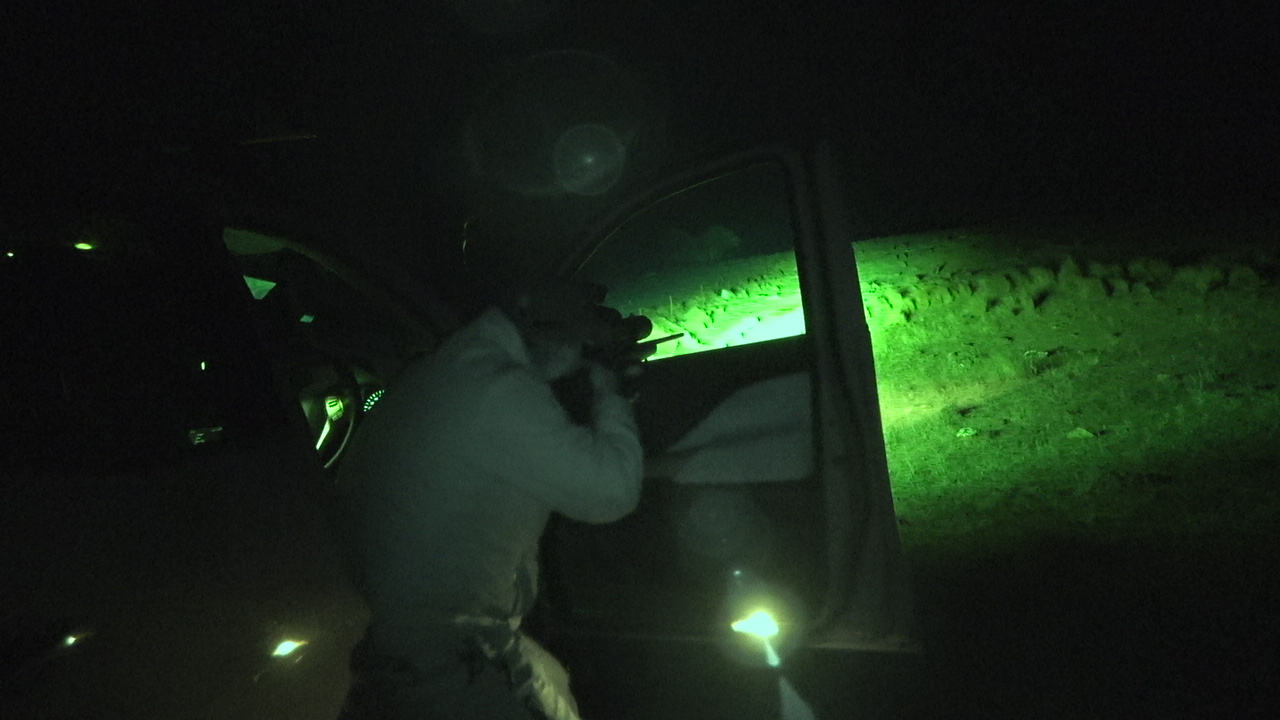
A lot of wallaby and kangaroo hunting is done at night under spotlight, when the animals are out feeding. But shooting from a vehicle is not always feasible, particularly in areas subject to high rainfall or with delicate ecosystems. In these situations, Shane harkens back to the traditional way of using hounds and shotguns.
“We head out early in the morning into the surrounding bushland with the dogs. This is when the wallabies are bedding down for the day and really hard to see. The dogs flush them out into the open where a group of hunters will be waiting with shotguns. It’s a really effective way to reduce the numbers and means we don’t have to hunt the same area as often.”
How big is the problem?
When it comes to assessing the size of the problem, location really does matter.
In most city and urban areas, wildlife sightings are rare. You might see the odd wallaby hopping around a park or even have a possum or two in a nearby tree. If you’re in the suburbs, particularly here in Tasmania, wildlife sightings are a little more common, but still not something you’re likely to complain about.
Seeing a live animal is likely to be a thing of rare beauty and wonder, and seeing a dead animal on the side of the road may even fill you with a sense of sadness and loss.
Most people who only have occasional interactions with wildlife tend to look at the issue from a micro level – ie. they look at the individual animal and consider the worth of its life.
If you live on small acreage and enjoy gardening, you might start to have conflicted views on wildlife. You may develop a bit of a love/hate relationship with them. You love seeing them but hate the holes they dig in your paddocks, the fences they constantly break through, the fruit and vegetables they dig into and the poo they seem to leave in the most inconvenient places.
The further away from the city you go, the higher the density of wildlife and the greater the number of problems they cause. At this stage, solutions need to be considered from a macro level – ie. the bigger picture. How does the wildlife population as a whole impact the region?
This is especially true for primary producers who have large scale commercial crops and livestock, which become a virtual smorgasbord for every opportunistic animal in the surrounding area!
Tasmanian farmer, Michael Mathers, who runs 400 head of Angus cattle on his 1000 acre farm at Ringarooma as well as mixed farms around Tomahawk, knows only too well the challenges farmers face from wildlife – both native and introduced.
Having rich grazing land attracts its fair share of competitive grazers including wallabies, kangaroo, rabbits, deer and possums. In fact, Michael estimates more than 600 uninvited wild animals come to eat at his paddocks every night.
“I am not exaggerating when I say we recently shot 1042 wallabies and kangaroos off our paddocks in a three week period, and we barely scratched the surface!”
Like most farmers, Michael gets frustrated at city-based activists who push for non-lethal control measures like fencing, relocation or sterilisation over shooting.
Wallaby fencing is an expensive control measure, costing between $10,000 – $14,000 per kilometre of fencing. And there are no government subsidies to help farmers recoup the costs.
“We have spent over $200,000 on wallaby fencing and at best it’s a temporary measure that only stops a small portion of the problem. Sure, it holds the wallabies back… for a while. But eventually, they break through. Them or the wombats. We are forever patching holes along the fence line and would shoot 10 – 15 wallabies each morning trying to get through the fence line!”
Wallaby fencing provides no protection against other pest animals. Eastern Greys (Foresters) and deer hop straight over it, rabbits and wombats burrow under it, possums climb it and birds fly over it.
“It is even harder for the farmers trying to grow agricultural crops. It’s a constant battle to keep wildlife out of the fields long enough to get the crops harvested and to market. All these vegans that think they do no harm have no idea how many animals are killed for their vegetables.”
So what does work?
“Shooting works. People complain about it, but it is better than the alternative. We won’t use 1080 here because of the incidental damage it causes threatened species such as birds of prey and quolls.”
Michael also points out that shooting is the most effective way to even the odds.
“We have plenty of wallabies and roos in Tasmania. You only have to look at the roadkill to see our populations are healthy. Even with regular hunting on our property, we have more wallabies and roos on the land now than we did six years ago when we moved here.”
There are a couple of key reasons for the burgeoning wallaby population. One is their unique ability to sustain multiple babies at once. Kangaroos and wallabies have two uteruses, which means they can be pregnant with two babies at different gestational stages. Macropods also have three teats, which allows them to feed two offspring at different stages of development. This means it is possible for a kangaroo or wallaby to be pregnant, be nursing an immature (pinkie) baby inside its pouch, and have a juvenile offspring that is semi-independent but still feeding from mum.
Macropods breed according to the conditions. During severe droughts they can hold off pregnancies until conditions improve and when conditions are good or feed sources are plenty, they can speed up their reproductive cycle and give birth multiple times throughout the year.
This leads us to the second factor in why macropod species are increasing in Tasmania. In 2008, the Tasmanian Irrigation Scheme was introduced with the aim to develop and enhance the productive capacity of the agricultural sector by giving them ready access to water.

The scheme has been hugely successful and seen massive tracts of previously unproductive land now producing a bounty of agricultural crops and rich pastureland.
While this has been great for our agricultural industry, it has also provided additional food resources for wildlife, bringing them out of forestry land to feed each night, and has resulted in a massive population spike of macropod species across Tasmania.
The International Union for Conservation of Nature (IUCN), who keep track of species levels worldwide, list the pademelon, the Bennet’s wallaby, and the Eastern Grey kangaroo as species of least concern. This means that their populations are either considered stable or increasing populations.
It is virtually impossible to estimate exactly how many wallabies and kangaroos there are in Tasmania, but consider this: the Tasmanian government estimates that more than one million wallabies are killed each year under crop protection permits or recreational hunting permits – and this is barely putting a dent in the numbers. This shows that the problem is far bigger than most people can even fathom.
Family traditions
For Deb Crow, wallaby hunting is a family tradition that has been passed down from generation to generation, and an important food source for many Tasmanians.
“My dad has been hunting wallabies for more than 50 years. I was only 2 or 3 when he took me on my first wallaby hunt, and I have gone on nearly every one since then. I learned about gun safety and managing wildlife long before I ever held a gun, or was old enough to hold a minor’s permit.”
Deb also enjoyed the social aspects of wallaby hunting.
“I learned to socialise with adults, as well as learning important life skills to hunt and gather food for my family.”
These skills definitely came in handy for Deb during the recent Covid-19 lockdowns.
“Knowing how to process game and bone out deer and wallaby to feed my family meant I didn’t have to worry about not being able to buy meat or mince from the supermarket.”
Deb also loves that her three young girls understand where the meat on the table comes from. 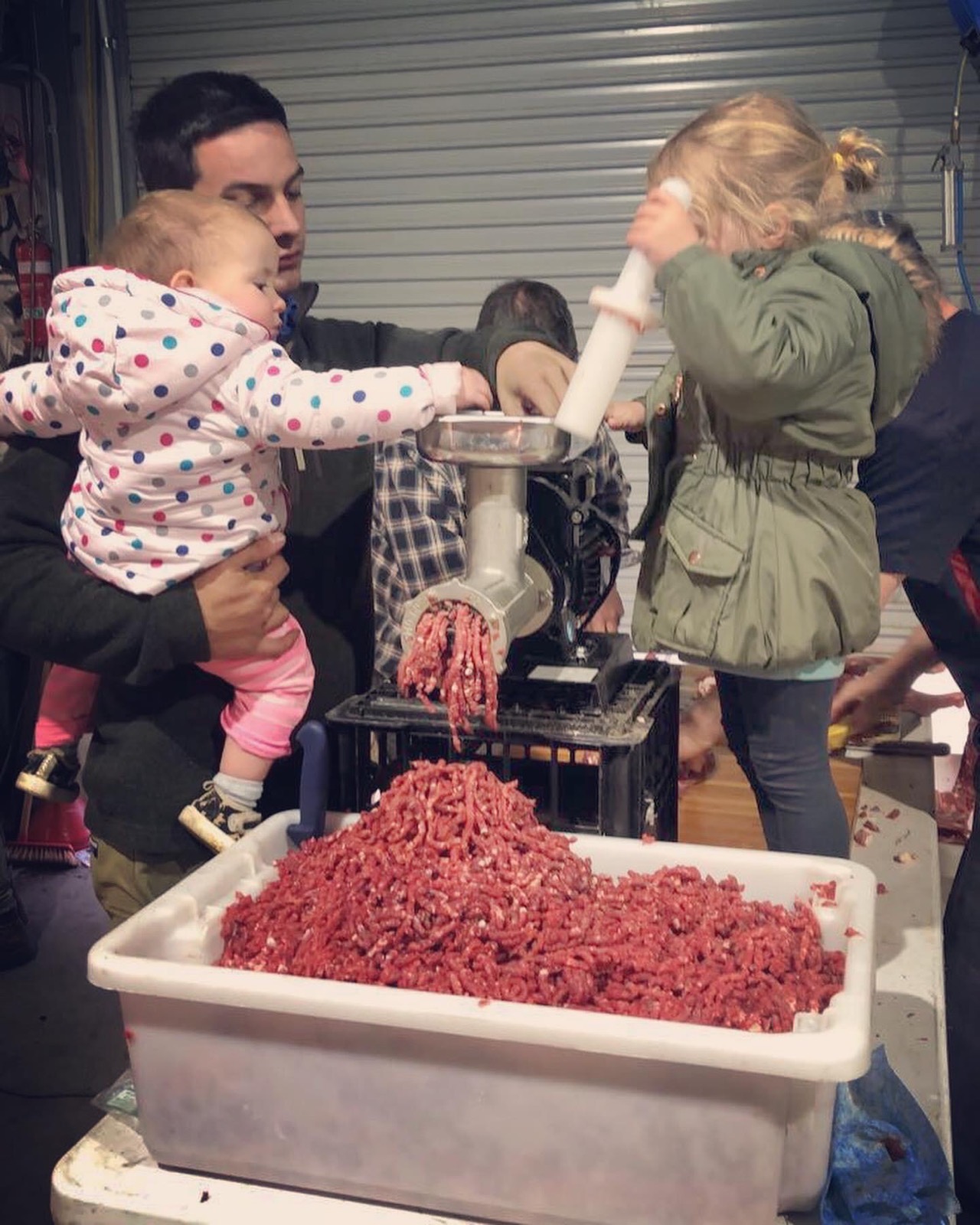 “The girls are involved in almost every step; from hunting, to processing the meat, to cooking it and eating it. The girls know wallabies are cute and cuddly, but they also understand they can be a pest if left uncontrolled. In fact, I think the girls understand more about wildlife than most adults. They have spent their entire lives surrounded by nature. They know you can love animals and still hunt them.”
“The girls are involved in almost every step; from hunting, to processing the meat, to cooking it and eating it. The girls know wallabies are cute and cuddly, but they also understand they can be a pest if left uncontrolled. In fact, I think the girls understand more about wildlife than most adults. They have spent their entire lives surrounded by nature. They know you can love animals and still hunt them.”
Deb gets frustrated at the people who think hunting is some Bogan sport full of drunken men.
“I know so many women who hunt, and who are teaching their children to hunt. Sure, there are a very small number of guys who make recreational hunting look bad, but they’re in the minority. There are bad apples everywhere, even among the activists. And there are already sufficient laws in place to prosecute people who do the wrong thing.”
Deb believes that the vast majority of hunters care deeply for animals and work hard to protect and preserve nature.
“After the bushfires, it was hunters out feeding and rescuing native wildlife and working to restore the land,” she said, referring to footage by ABC of hunters involved in a wildlife rescue program in the Central Highlands. “We didn’t see a single city-based activist while we were out there. Yet the media, activists and even our politicians often paint hunters as blood thirsty killers on the loose. How many times do you see Port Arthur mentioned whenever hunting is mentioned? It’s like they are comparing hunters to Martin Bryant, and lawful hunting with criminal activity!”
Entry level sport
Deer hunting might be popular, and most hunters dream of getting a nice fallow buck for the table and the wall. But if deer hunting is the Holy Grail, wallaby hunting is the grass roots sport.
In our recent podcast with Guy Barnett, the Minister pointed out that wallaby permits were the most commonly bought hunting permit in the state. In 2019, 7400 wallaby permits were issued, compared to just 5000 deer permits and only 1134 duck permits.
There are several reasons why wallaby hunting is popular in Tasmania.
For starters, it has to be one of the cheapest entry level hunting sports in the State and requires very little specialist equipment to get started. All you really need is a basic firearm (according to the Animal Welfare Standard for the Hunting of Wallabies in Tasmania – the governing standard for hunting wallabies – you can humanely take a wallaby with either a .22 calibre rimfire rifle or 12 gauge shotgun up to 50 metres. These are both very affordable entry-level firearms), a basic hunting knife, a wallaby permit (under $26 for a concession holder), some blaze orange clothing to ensure you can been seen by other hunters, and access to either private or public land.
If you want to hunt at night, you’ll need a crop protection permit from a recognised farm and a spotlight, and if you want to hunt on foot, you might want to consider adding a basic backpack and some other basic hunting equipment. If you want to hunt with hounds, then you’ll obviously need some dogs.
The wallaby season runs all year, compared to other hunting game, which have very limited seasons. And as we have already stated, wallaby populations are very high and distributed all over the state.
No wonder wallaby hunting continues to be one of the most popular hunting activities in Tasmania, injecting much needed funds into rural communities and helping to keep the wallaby populations at a manageable level.
If hunting wallaby was banned, it would be a disaster both for the environment and the economy in Tasmania.
Are you interested in learning to hunt your own wild game meat? Check out our series on how to apply for a firearm’s licence.
What is I Am Hunter?
I Am Hunter wants to change the way hunting is perceived and to change the conversation from a negative one driven by anti-hunters to a positive one led by hunters.
Our goal is to help hunters become positive role models and ambassadors for hunting, while simultaneously helping non-hunters understand why hunting is important.
You can become a supporter and help us achieve our goal and spread a positive message about hunting with the wider community.
Related content
If you would like to know more about hunting wallabies, kangaroos or deer in Tasmania, check out these related articles and podcasts.
Our other channels
Get our newsletter
Get our free monthly newsletter direct to your inbox
Listen on iTunes
Listen to our podcast on iTunes.
TV series
Watch I Am Hunter episodes on My Outdoor TV (MOTV)


